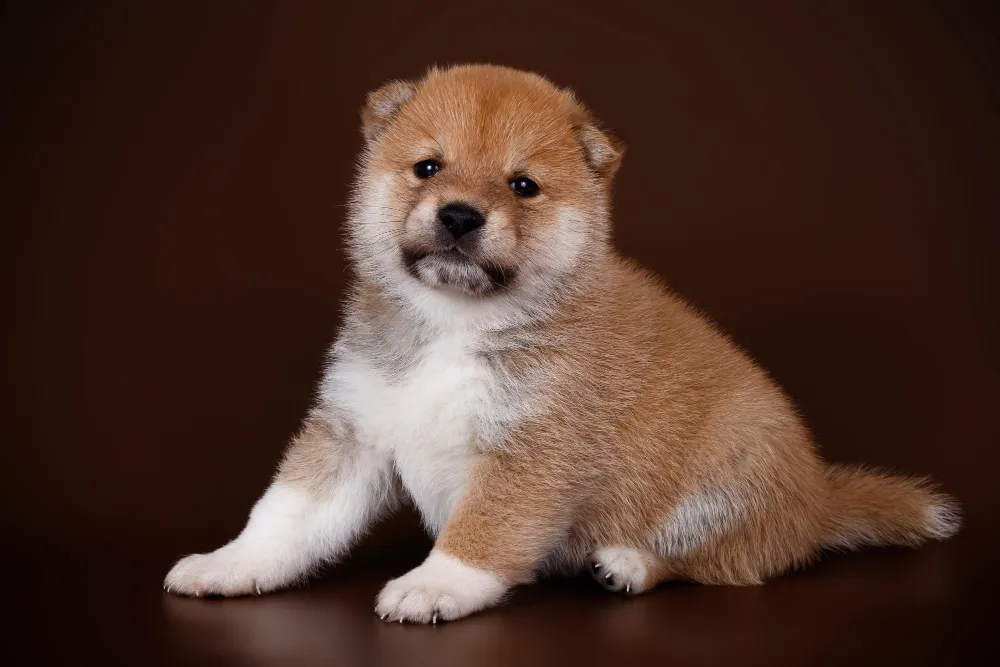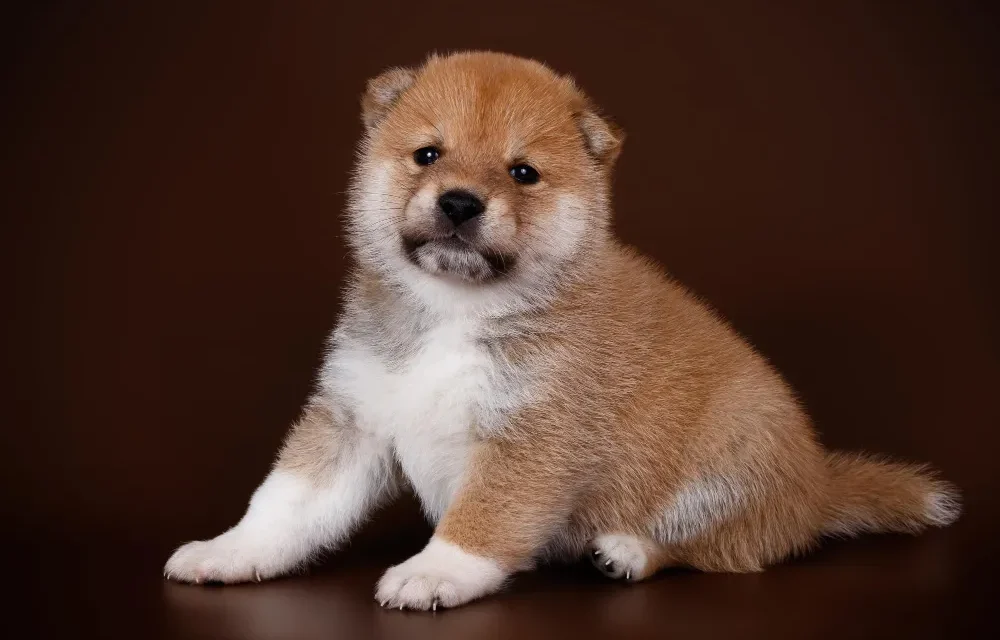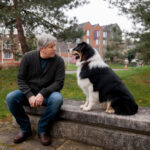Thinking about bringing home a Shiba Inu puppy? Or maybe you already have one zooming around your living room? Either way, you’re in for an unforgettable ride!
These fluffy firecrackers come with a bold personality, curious nature, and just enough sass to keep you on your toes. But what should you expect in their first year? How fast do they grow? When do the tantrums end (if ever)? Let’s break down what life with a Shiba Inu puppy really looks like, month by unpredictable month.
In this blog, we’ll walk you through the key stages and what you can expect during your Shiba Inu puppy’s first year of life.
How long does it take for a Shiba Inu to reach full size?
A purebred Shiba Inu typically reaches full size by 12 months of age, though some may continue to fill out slightly until around 14 to 18 months, especially males. While they grow quickly in their first year, it’s just the beginning of their journey, Shiba Inus have a lifespan of around 12 to 15 years.
- Height: Most Shibas reach their full adult height (around 13.5 to 16.5 inches at the shoulder) by 9 to 12 months.
- Weight: They usually hit their adult weight (17–23 pounds for males, 14–18 pounds for females) around the same time, though their body may still mature and muscle up a bit after their first birthday.
1. Arrival and Early Weeks (0–8 Weeks)
What to Expect
During their first few weeks of life, Shiba Inu puppies are tiny, fragile, and entirely reliant on their mother. Born blind and deaf, they spend most of their time sleeping and nursing. But by the time they reach 8 weeks, you’ll see big changes, they’ll open their eyes, begin to hear sounds, wobble around on unsteady legs, and even start playing with their siblings. It’s a magical time of discovery and early development.

Important Tips
- Socialization Starts Early: While most puppies stay with their mother during this time, gentle handling by humans is essential for laying the foundation of trust and comfort. If you’re adopting from a breeder, ask how much human interaction the pups have had.
- Weaning Transition: Around 4 to 6 weeks, puppies begin to transition from their mother’s milk to soft puppy food. This is the start of their independence, but also when digestive sensitivity can occur, so make sure they’re on a quality diet suited to their age.
- First Vet Visit: Your puppy’s first round of vaccinations and a general health check usually begin around 6 to 8 weeks. It’s also a good time to discuss deworming and parasite control with your vet.
2. The Critical Socialization Period (8–16 Weeks)
What to Expect
This phase is absolutely crucial for shaping your puppy’s lifelong behavior. Shiba Inu is considered an affectionate, naturally intelligent, observant, and independent thinker. At this age, they’re curious about the world, but also sensitive to new experiences. If not introduced properly, they can become wary or even reactive later in life.
Important Tips
- Expose Them to the World: Slowly introduce your puppy to new people, children, friendly dogs, car rides, vacuum cleaners, and different surfaces like grass, tile, or gravel. Keep every new experience positive.
- Start Basic Training: Shibas respond best to positive reinforcement, so reward-based training is key. Begin with basic commands like sit, stay, come, and leave it. Keep sessions short and fun.
- Crate Training for Structure: A crate helps with housebreaking and gives your puppy a safe, quiet place to rest. Think of it as their personal den, not a punishment.
- Vaccination Schedule: Follow up with your vet to complete all necessary vaccinations during this stage, including parvo and distemper protection.
3. Juvenile Stage (4–6 Months)
What to Expect
At this point, your Shiba Inu dog breed is growing fast, both in size and personality. You’ll notice bursts of energy, increased confidence, and a mischievous streak. They may test boundaries and start ignoring commands they previously followed. It’s not rebellion, it’s part of growing up.
Important Tips
- Burn Off That Energy: Shibas are active and intelligent, so daily walks, playful time, physical and mental exercise are essential. Boredom can lead to chewing, digging, and other unwanted behavior.
- Be Consistent: This is the time to double down on training. Stay firm with rules and avoid sending mixed signals (like letting them on the couch one day and scolding them the next).
- Teething Alert: Expect some chewing during this stage. Offer plenty of safe chew toys and redirect any furniture-chewing to appropriate alternatives.
- Proper Nutrition: Transition to high-quality puppy food that supports bone, joint, and brain development. Always have fresh water available.
4. Adolescence (6–12 Months)
What to Expect
Your Shiba Inu breed may look like a full-grown adult, but mentally, they’re still in their “teenager” phase. This stage often brings a resurgence of stubbornness, selective hearing, and a strong desire to do things their way. It’s not uncommon for dogs to regress in their training a bit during this period.
Important Tips
- Reinforce Training: Continue building on their commands and introduce more advanced obedience skills. Use high-value treats and stay patient, they’ll catch on.
- Vet Visits & Spay/Neuter: Around this time, your vet may recommend spaying or neutering. It’s also a good point for a full wellness check.
- Grooming Routine: Shibas are known for their clean habits, but they do shed, a lot! Twice a year, they “blow” their coat, so regular brushing will keep the fur situation manageable.
- Deepen the Bond: Spend quality time playing, walking, and simply relaxing together. Building a strong bond now pays off with lifelong trust and loyalty.
Common Challenges in the First Year of Shiba Inu
Raising a Japanese Shiba Inu puppy isn’t always smooth sailing. While they’re undeniably adorable, their unique temperament brings a few hurdles that first-time owners might not expect. Understanding these common challenges early on can help you prepare, stay patient, and build a better bond with your pup.
1. Stubbornness and Independence
Shiba Inus are fiercely independent and often described as “cat-like” in their behavior. They prefer doing things their own way, and on their own terms. This can make training a test of patience. They may ignore commands not because they don’t understand, but because they’re simply not in the mood to listen.
2. Escape Tendencies
Shibas are agile, quick, and surprisingly sneaky. If they see an open door or a low fence, they might bolt without hesitation. Their prey drive makes them chase after squirrels, birds, or anything that moves.
3. Socialization Issues
Without early and consistent socialization, Shiba Inus can become aloof, suspicious, or even reactive toward strangers and other animals. Their natural wariness can turn into fear-based aggression if not managed.
4. Heavy Shedding
Shibas have a double coat that sheds year-round, with two intense “blowing coat” seasons, usually in spring and fall. You’ll notice fur everywhere if regular grooming is neglected.
5. Possessiveness
Some Shibas may guard toys, food, or personal space, especially if they haven’t learned proper boundaries. This can lead to snapping or growling if not corrected early.
Nutrition and Health for Your Shiba Inu Puppy in Their Early Life Stage
The first few months of a Shiba Inu puppy’s life are crucial for laying the foundation for lifelong health and development. Proper nutrition, regular vet visits, and attentive care during this period ensure your puppy grows strong, energetic, and well-adjusted.
Feeding Basics:
From birth to around 8 weeks, puppies rely primarily on their mother’s milk, which provides essential antibodies and nutrients to support immunity and rapid growth. If you adopt a puppy slightly older or are supplementing, high-quality puppy formula is recommended under veterinary guidance. Once they reach 4–6 weeks, you can gradually introduce soft, nutrient-rich puppy food, helping them transition from milk to solid food.
Nutrient Requirements:
Shiba Inu puppies need a balanced diet that supports their rapid growth, bone development, and brain function. Look for puppy food rich in:
- High-quality proteins (chicken, fish, or lamb) for muscle development.
- Healthy fats for energy and coat health.
- Calcium and phosphorus for strong bones and teeth.
- Omega-3 fatty acids for brain and eye development.
Hydration:
Always ensure fresh, clean water is available. Puppies can become dehydrated quickly, especially during active play sessions or warmer months.
Health Check-ups:
Early vet visits are vital to monitor growth, ensure proper vaccination schedules, and address common issues like worms, fleas, or digestive sensitivities. Your vet can also provide guidance on transitioning diets and recommend supplements if necessary.




